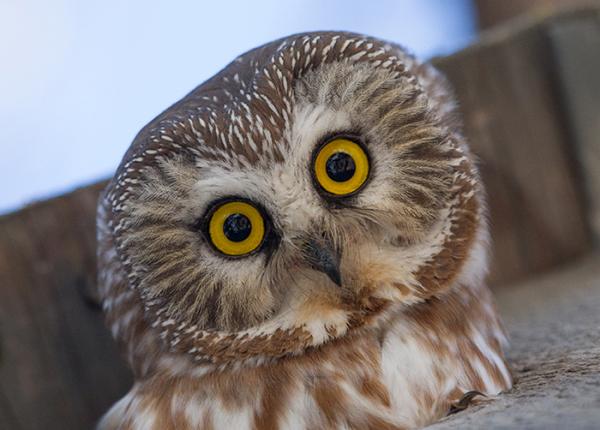I know this isn’t our favorite topic, but I feel it occasionally needs to be addressed. This article, unlike most, isn’t sensationalized or promoting only one side of the argument and it also updates us on multiple pending legal cases fighting to save the owls.
It’s looking like a real life trolley problem, so as always I am curious to hear your takes on things. It’s your planet too, and whatever the outcome here, it will likely set precedent for future scenarios .
From Mercury News
PUBLISHED: January 28, 2025
The Marin Audubon Society has joined a coalition of conservation groups defending a federal plan to kill invasive barred owls in the Pacific Northwest.
The coalition has requested to intervene as co-defendants in two federal lawsuits, one in Oregon and the other in Washington state, to support the U.S. Fish and Wildlife Service. The coalition says the culling, while unfortunate, is needed to protect the threatened northern and California spotted owls.
In addition to the Marin organization, the coalition includes the Environmental Information Protection Center, the Klamath-Siskiyou Wildlands Center in Oregon, Umpqua Watersheds in Oregon and Conservation Northwest in Seattle.
“I’m pleased that the organizations in the northwest took this on and I am hopeful that we’re going to be successful,” said Barbara Salzman, president of the Marin Audubon Society.
“We need to protect our native ecosystem,” Salzman said. “The northern spotted owl is native, and their loss would be significant on our ecosystem.”
The U.S. Fish and Wildlife Service “barred owl management strategy” approved in August calls for hunting and killing nearly half a million of the birds over 30 years across Washington, Oregon and California. The plan is designed to reduce social competition with northern and California spotted owls, which are more docile raptors than their bigger, bullying cousins, and they are native to the Pacific Northwest.
The three federal parks in Marin where the culling practice would be authorized are the Golden Gate National Recreation Area, Muir Woods National Monument and the Point Reyes National Seashore.
In November, animal welfare groups filed federal lawsuits against the plan in Oregon and Washington calling the strategy inhumane and alleging violations of federal laws.
Both lawsuits argue that the wildlife agency is using the barred owl as a scapegoat for its mismanagement of spotted owl habitat. The suits say the destruction of old growth forests, including through human activities such as logging and development, as well as effects of climate change, are the true reasons for degradation of the spotted owl habitat.
Plaintiffs say barred owls are native to North America and the plan is a violation of the Migratory Bird Treaty Act. They also allege that the wildlife agency has violated the National Environmental Policy Act by not fully vetting alternative management options.
Plaintiffs in both suits say its worrisome that the hunting would be allowed to happen at night, which puts the threatened spotted owl at greater risk of being accidentally misidentified as its look-a-like barred owl cousin and killed.
Another concern is that the culling would be allowed in federally designated wilderness areas, which are supposed to be managed by the service in a limited way so the habitats remain unaffected by humans.
“I am disappointed that some groups believe that killing barred owls is necessary to help spotted owls,” said Jennifer Best, director of the Friends of Animals wildlife law program. The organization is the plaintiff in the Oregon case.
“I hope they will come to better understand the shortcomings and dangers of the barred owl kill plan,” Best said. “I also hope that these groups see that the barred owl kill plan will set a dangerous precedent for all wildlife management by interfering with natural competition between animals instead of addressing the root causes that are threatening many species, including habitat destruction and climate change.”
Plaintiffs in the Washington case are equally disappointed.
“We cannot allow a good goal, such as saving the spotted owl, to obscure an inhumane and unworkable plan,” said Wayne Pacelle, president of Animal Wellness Action and the Center for a Humane Economy. “Not only is the cost of the program in excess of a billion dollars, but it fails to gauge that surviving owls will simply fill the vacuum and occupy nests where shooting previously occurred.”
He said that his organization estimated it could cost about $1.34 billion. The estimate was based on a recent $4.5 million grant from the National Fish and Wildlife Foundation to the Hoopa Valley Tribe in Humboldt County to kill up to 1,500 barred owls. Taking that amount, Pacelle said it is estimated to cost about $3,000 per owl.
Salzman said that after years of trying to manage the barred owl problem, wildlife experts have been unsuccessful in proposing alternatives.
“Either way you look at it there is going to be loss: the individuals lost in the culling or the loss of spotted owls as a result of the barred owls being here,” Salzman said. “We’d rather keep the native species.”
Salzman said there could be many unknown and unintended consequences of allowing the barred owl’s continued habitat expansion.
“They’re bigger, more aggressive, they have more varied diets,” Salzman said. “It could create a different condition in our ecosystem.”
Without barred owl management and older forest habitat protections, the spotted owls are likely to go extinct, said Tom Wheeler, executive director at the Environmental Protection Information Center. The organization is part of the coalition with the Marin Audubon Society.
“Barred owl control is well studied and has been shown to be extremely effective in countering barred owl threats to spotted owl survival, recruitment and recovery,” Wheeler said.
A federal judge approved the coalition’s request to intervene in the Washington case. The request in Oregon is pending.
The Fish and Wildlife Service declined to comment, citing the pending litigation.
Judge should grant the plan with conditions that make sure that baseline conditions change - that they do something to habitat to make it better for the local owl. Humans fucked it up. Now we gotta pay for management until it’s better.
This is similar to sniping cats from helicopters. Bad in theory but in practice badly needed.
A big part of the problem is they need old growth, which is generally over a hundred years old, to establish the ecosystem they need. It has proven to be too valuable for people to leave standing, to the point there are fires a little too conveniently located that allow forest that is illegal to cut normally to then be logged for “safety” or access to areas affected by the fires.
Ecosystem and climate change has also allowed the more adaptable and aggressive Barred Owls to migrate west, and there’s no reversing that either.
The Spotted and Barred can hybridize, but those owls are currently killed too in an effort to keep Spotted Owl genes unmixed with the Barred.
The time to fix this was over 50 years ago. With pending gutting of environmental protection agencies, this project may die before it starts, but so will many of the things preserving the last bits of old forest. I am very nervous for our environment based on what I’m seeing and hearing this month.
Its time for The Birds to become reality
The time to fix this was over 50 years ago.
If this is the case, especially with what you said about the old-growth forests, it seems that a balance should be maintained. Since it seems like the climate change problems have given way to a new habitat for the Barred Owls, they will just be fighting a constant battle.
I wonder if there are other ways besides shooting live animals, though. At my university, they used to keep geese populations down by shaking a certain percentage of their eggs to prevent them from hatching.
They remind me of the Giant Pandas. They have very specific needs, reproduce slow, their habitat areas are fragmented, have a narrow diet compared to other species.
Reintroduction efforts have gone poorly since underlying issues can’t be fixed. As many Barred Owl as they want to shoot it’s still something like 1% of the population if they manage to kill them, and they look pretty similar to the owls they’re trying to save, so any mistake in shooting the wrong owl is much more devastating to the one they’re trying to save.
It’s not just the US, even Canada has done very poorly in efforts to protect their Spotted. Logging just seems too powerful a force in the PNW still, and the leaders of both countries don’t seem inclined to challenge industry.
With the outright contempt for the environment now, I fear for even the captive breeding programs, though I don’t know if they get any public money to begin with.



